In this article, we have explained all about the Appenzeller Spitzhauben Chicken. This breed traces its origin in Appenzell, Switzerland. This breed is only popular for its egg-laying and ornamental use.
The Appenzeller Spitzhauben chicken breed is recognized in different associations in their original home country and other parts of Europe. However, until today, The American Poultry Association does not accept this chicken as a continental breed.
The Appenzeller Spitzhauben chicken is thought to have grown in the local monasteries. The breeds and the dates involved in its development are not known.
During the 1950s, when the Appenzeller Spitzhauben chicken breed was facing extinction, the German breeder Kurt Fischer helped to ensure that the breed survived.
This breed arrived in England in the early 1970s, courtesy of Pamela Jackson, who was the first to import Appenzeller Spitzhaubens. After this, the breed of chickens increased due to the sourced hatching eggs in 1972.
The breed is named after its crest and is always supposed to be of medium size and pointing forward. Literally, Spitzhauben translates to the pointed bonnet.
History and Origin of Appenzeller Spitzhauben Chicken
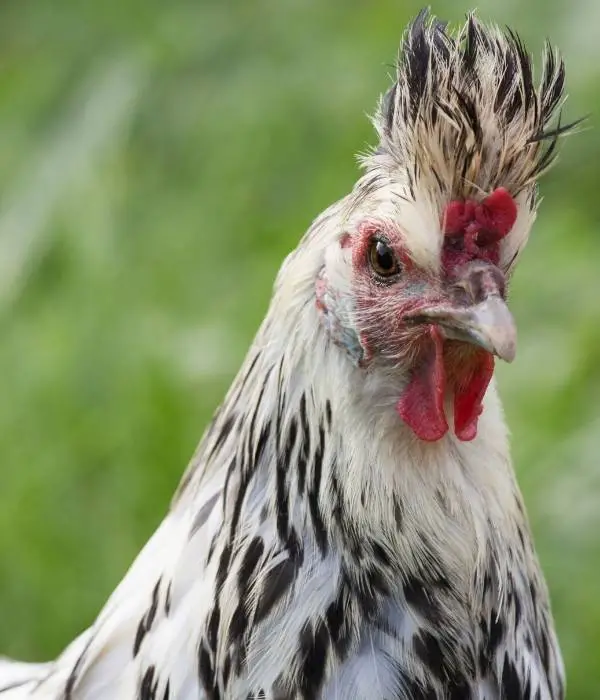
The Appenzeller Spitzhauben chicken is a European origin laying breed, which means it is an egg producer that is relatively short. Although their historical origin is considered a bit inconceivable, they are believed to be in existence around the 1500s and 1600s. However, after the eruption of World War II, The breed was facing extinction.
The name Appenzeller Spitzhauben refers to those lace bonnets, ceremonial hats worn by ladies in Appenzellerland. As the name infers, the Appenzeller Spitzhauben chicken originated from The Appenzell Canton region, in The North-Eastern part of Switzerland. Due to their existence for centuries, they have been officially registered as the national bird in Switzerland.
During their ancient days, The breed was primarily kept by some of the monasteries and later flourished for centuries. With The steady, consistent rise in the population of the breed, they have finally found their way out to local farmers.
From the 1800s up until the 1900s, the breed was spotted far away from their original motherland. This allowed the breed to get to the summit of its continuous rising popularity.
A German farmer, Kurt Fischer, started trading and importing Appenzeller Spitzhaubens. He is to be thanked for why the breed became realized by The German Poultry Standard. Very many breeders have been recognized during this period for revitalizing this breed, which facilitated it to find its way to England in the late 1970s.
Originally, this breed was only available in Silver Spangled, Black, and Gold Spangled. The skill possessed by German breeders has developed Chamois Spangled (buff that has white spangles) and Blue. All five color varieties are available in the UK.
As has been mentioned, the Appenzeller Spitzhauben chicken is not recognized by the APA. The breed first landed in America as an initiative of a friend of Dr. Albert McGraw around the late 1950s.
The Appenzeller Spitzhauben chicken has two different varieties of breeds which are the; Spitzhauben, meaning “a pointed bonnet,” and Barthuhner, meaning “a bearded hen.” Both are ornamental varieties.
Appenzeller Spitzhauben Chicken Color Varieties
The Appenzeller Spitzhauben chicken has different varieties of colors. They include: Silver Spangled, black, Gold spangled the standardized UK. Barred, chamois spangled, blue and black-mottled
Lifespan of Appenzeller Spitzhaubens
The Appenzeller Spitzhauben bird is generally a very healthy and hardy chicken. When you keep your birds in good condition, you may have them around for at least as long as 5 to 8 years or even longer.
Appenzeller Spitzhaubens Egg Production
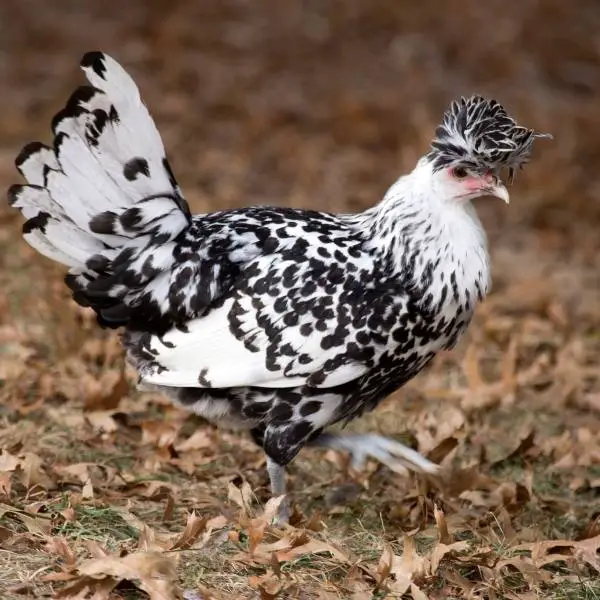
The Appenzeller Spitzhaubens is widely popular for its white legs, white skin with black polkas. It is an egg-laying breed that does well in cold regions.
Apart from their great hairdo, they lay a decent number of eggs. They persist with the laying even when cold winter sets, unlike most other chicken breeds.
The breed lays white eggs which are small to medium in size. They start their laying cycle at the age of 5 months. The breed can lay up to 4 eggs in a week and 150 to 180 in a year. Similar to all chickens, they do not stop laying when they are in their annual molt.
The Appenzeller Spitzhauben hens are temperately broody. This means that the breed may occasionally decide to sit on their eggs and hatch their chicks. The Appenzeller Spitzhauben hens also tend to be attentive and excellent mothers.
Temperament
The Appenzeller Spitzhauben chicken are incredibly wild and flighty. The breed doesn’t care about their contact with humans. This breed is hard to handle.
However, according to anecdotes, the breed is quite personable and a little friendly. One of the keepers of this breed described the hen as gentle, easy-going, and quiet. Some of the species of the breed may be wild whereas some are calm in nature.
Before you have added the Appenzeller Spitzhauben poultry to your flock of birds, you are first supposed to have the ability to accept and handle their flighty personality. These chickens are not always calm in nature, they always jump and go to high places.
If you are not ready to look after birds that have wilder temperaments, you should consider other breeds instead. We recommend asking the hatchery or breeder what to expect with their species of the Appenzeller Spitzhaubens.
Additionally, if you can handle your birds more frequently from a tender age, you can see at times tame even the wildest breeds.
The roosters of this breed could potentially be aggressive to people, but considerably. According to many chicken keepers, the Appenzeller Spitzhauben roosters are unusually friendly. According to another chicken keeper, the rooster follows his entire family members around everywhere.
Traditionally the Appenzeller Spitzhauben Chicken is popular for its fight and wild activities. So there are chances you end up with one rooster who lacks any interest in humans at all.
Also read: How to Clip Chicken Wings? — To Stop Their Flying
Color, Size, Appearance, Characteristics of Appenzeller Spitzhauben Chicken

Color
The American Poultry Association does not recognize Appenzeller Spitzhauben Chicken as a standard breed but some local authorities accept them.
There were three main colors of Appenzeller Spitzhauben hens. These were; Golden Spangled, Silver Spangled, and Black. Recently, Blue and Chamois Spangled have also been added to the list. The Silver Spangled is the most common variety in The United States.
Size
Since this breed is a relatively small bird and light in weight, The standard weight of a chicken ranges from 3.5 to 4.5 pounds. 3.5 lbs are the average size of an Appenzeller Spitzhauben hen, while 4.5 lbs for the rooster.
Appearance
The Appenzeller Spitzhauben is popular for its white skin that has black spots and slate legs. Due to the spotted shades, people acknowledge them under the 101 Dalmatian chicken breed.
Apart from their plumage, one noticeable trait of Appenzeller Spitzhauben hens is their crest. These breeds have a wild-looking bunch of feathers at The top part of their heads.
Appenzeller Spitzhauben hens are also noticeable for their V-shaped comb, also known as devil combs or horn combs. These combs usually grow in the front part of their crests.
Like most of the crested breeds, these chickens have deep and large nostrils than the other breeds. They have medium-sized wattles, medium-large white earlobes, dark-brown eyes, and beautiful blue shanks.
The standing modern type hair style like feather on their head top looks great on them. This is an unique appearance of Appenzeller Spitzhauben chicken breed.
Characteristics
The Appenzeller Spitzhauben is a docile chicken. However, with their flighty nature and small size, they are more susceptible to peck by the other breed flocks.
If you own a mixed flock, make sure your yard and coop have adequate space for the Appenzeller Spitzhauben chickens to get away from the other breed when they need to.
On average, the Appenzeller Spitzhauben breed seems to be noisier than the other chicken. These birds are among the chattier breeds. This character makes them expressive, and you really get to know more about them.
However, if your neighbors do not appreciate chicken talk, the Appenzeller Spitzhauben chicken is not the right bird for your environment.
Benefits of Raising Appenzeller Spitzhauben Chickens
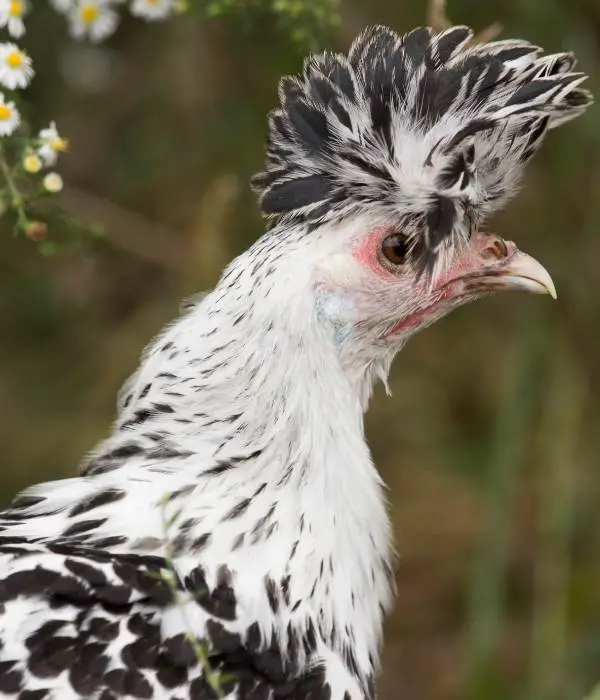
In temperament, the breed is very active and is sometimes a little flighty. Due to these traits, the breed is good for foraging. To contain this breed, you will require high fences with long backyards which do not allow them from flying away.
The hens are good layers despite being an ornamental breed. They lay small to medium average size eggs, so you will be happy to collect eggs every week.
The weight is average, but you can use this chicken for meat purposes. But most of the people keep them only for show purpose for their lovely spotted appearance and rarity.
Problems in Raising Appenzeller Spitzhauben Chickens
One of The challenges of having the breed in your flock for the first time is the inability to know their temperament. Therefore, as you are getting ready to introduce the species to your flock, you must be ready for both angry and calm temperaments.
Another challenge is their noise. If you do not like chicken chat, you should get other breeds apart from these. However, their chatty nature is a bonus to those owners who would love to know the personality of their chicken.
This chatty nature could be annoying to your neighbors. Instead of making The regular clucking made by chicken, they make The cluck similar to that of The Amazonian jungle bird. You can use a no-crow collar for chickens with noisy nature.
Appenzeller Spitzhauben Chicken Care Guide
The Appenzeller Spitzhauben chicken is an adventurous breed that loves mountains and wanders all around your yard heights. This is not a chicken breed for confinement zone, you must allow them to free-range otherwise they live in stress.
By giving them space, the birds will learn friendliness. Get ready for any of the two personalities of the birds if you are planning to have them in your flock. You can train young chicks to make them docile if you actively handle them.
The Appenzeller Spitzhauben chickens are great climbers and love to live in places with height. Most of the roosters and hens love to roost on tree branches in the nighttime. So, if you provide them with this type of environment, they will live a stress-free life.
How Rare are Golden Appenzeller Spitzhauben chickens?
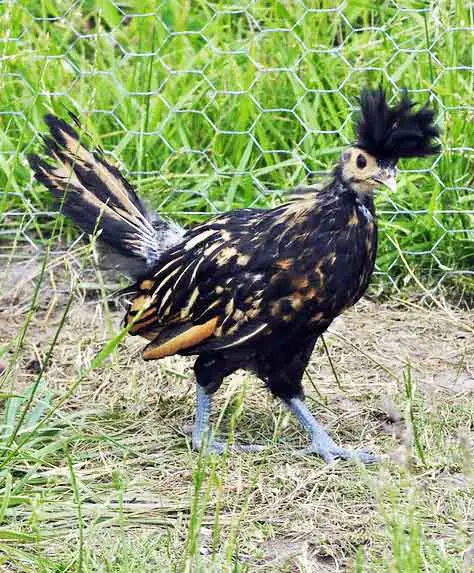
The Golden Spangled Appenzeller Spitzhauben chicken, commonly known as The Golden Spangled Spitzhauben, traced its origin back in Switzerland and is their national bird.
This breed is very rare in The United States of America, and The American Standard Perfection has not yet admitted the breed.
Since the breed is registered as threatened, conservation status might require an extra license to keep or own on your farm. You should check with your local conservation department for guidance on the conservation status of these birds.
For the breeders, it is important that you check the bloodline birds with the local animal breeding organizations for the records. These legitimate documents are important should you wish to display your birds in different poultry competitions or shows.
You can find information and advice on adopting the rescued animals in your local animal welfare center.
Final Words
It is important to do thorough research concerning the Appenzeller Spitzhauben chicken before you have decided on bringing some to your flock.
With the availability of different sources such as poultry shows and the internet at large, all the information you might require to know is available.
It is important to compare information from different sources so that you have plenty of information and also the surety of pure breed. According to most sources, the benefits of Appenzeller Spitzhauben chickens weigh the disadvantages.
Therefore, raising Appenzellers could be advantageous to you, though with slight demands you should meet. With the above information in mind, when you are getting ready to have Appenzeller Spitzhaubens in your flock, going wrong is very hard.
It is wise to seek the guidance of a professional chicken keeper for the few instances you might not know what to do.
Check with your local Appenzeller Spitzhauben chicken raisers to know the intimate details of the birds. Knowing the bloodline and temperament of their parents, is important if you will need the birds for exhibition in poultry and agricultural shows.
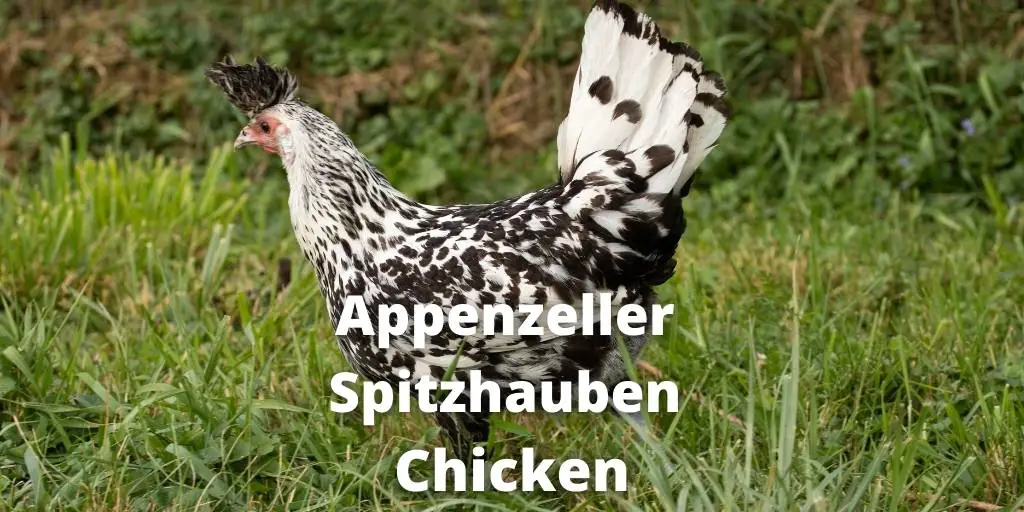
They are such beautiful birds, I raised a Golden Spangled Appenzeller Spitzhauben rooster and had chicks with him 2 roos and 1 hen his chicks soon over powered him and he wasn’t the favorite rooster any more he then got sad and would eat food and drink unless we gave him eggs or force feed him. He stayed in our garage over the next few days he did ok then while we were gone he sadly died, His chicks are know full grown and one almost looks the exact same chicken except he has his hair flattened and less coloring in the feathers. He will forever be the best rooster we will ever have.
Hi Karen,
Sorry for your loss.
I hope his duplicate chicks will love you too and understand your love towards them.
Bijaya